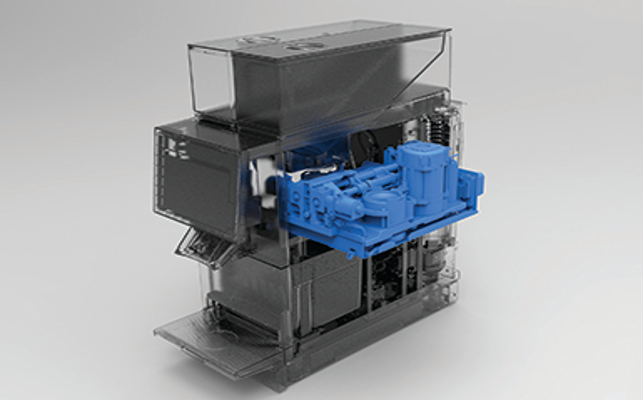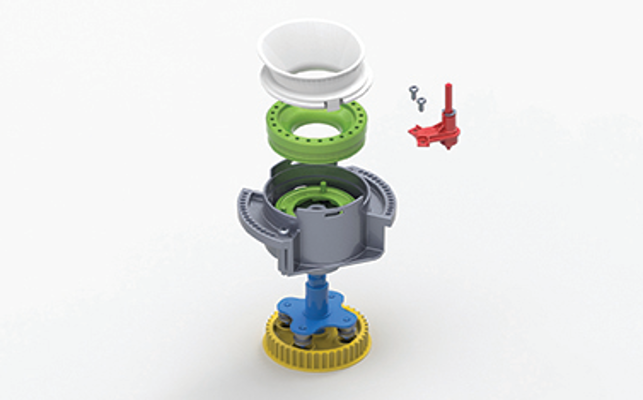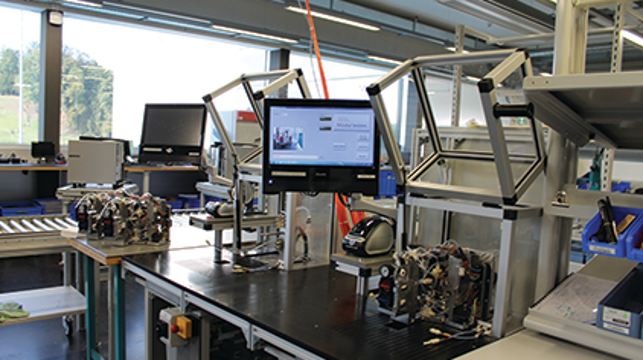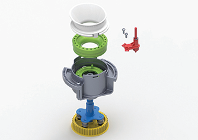
Solid Edge supports advanced visualisation with many integrated features and functions
Starting out in 1974 by producing whipped cream machines and milk foamers, by 1995 Thermoplan had moved onto fully automated coffee machines for gastronomes. Then, in 1999, a commission came from the American company Starbucks, which in turn led to further expansion and today this Swiss manufacturer develops production lines for Costa Coffee and Nespresso, as well as McDonald’s.
In 2000, following a market analysis, Thermoplan introduced Solid Edge CAD software for the design of all its products. The reason for this decision was the tool’s userfriendliness, its good price/performance ratio and it being equipped with special functions for injection moulding tools and sheet metal design.
In addition, the solution is used by many of Thermoplan’s suppliers. “Part of our strategy involves close cooperation with suppliers,” says Adrian Steiner, CEO and co-owner of Thermoplan. “That’s why we wanted to work with a system that has proven success there.”
The age of digitalisation
Although Solid Edge has proven successful solution for the design of its coffee machines, the age of digitalisation means that there is now more to consider in the design process than just hardware development. “Software has become so important strategically that we develop it in-house,” explains Steiner.
Today the machines are equipped with specially developed software systems. For example, a user-friendly touch panel enables the user to control and configure nearly all functions of a machine.
Thermoplan’s digitalisation efforts included establishing a connection between Solid Edge and the company’s enterprise resource planning (ERP) system to improve ordering processes.
Digitalisation has also made it possible to better track and manage the materials used in production and Thermoplan’s quality assurance processes.
The company can now also offer customer service remotely over the internet; for example, by providing instructions for replacing the water filter.

A visualisation of an exploded assembly
Products with many parts
The design of each coffee machine requires Thermoplan engineers to model 2,500 to 3,000 parts, about 50 per cent of the parts required for a finished machine.
With five main product lines (for Starbucks, Costa Coffee and Nespresso as well as separate lines for large and small machines for gastronomes), Solid Edge and its integrated product data management (PDM) system at Thermoplan includes up to 20,000 parts.
“Solid Edge helps us with its excellent assembly functions, which on the one hand facilitate the overview and the design in context, and on the other hand optimise performance,” says Reto Zibung, development engineer, R&D at Thermoplan.
His colleague Renato Schaible, also a development engineer, adds: “Thanks to the view configuration and the local caching we are able to manage large assemblies quite well.”
Solid Edge subassemblies streamline design of modularised products. Automatic collision detection eliminates errors, and navigating through the assemblies gives insight into details.
“For kinematic analysis we can simply disassociate individual parts from their references and move them in context,” explains Zibung.
New functions to try
Thermoplan designers have not yet used the integrated direct modelling functions of synchronous technology, but this will change with the new product versions.
“We see a huge advantage in working with external data and so we will incorporate the use of synchronous technology. “This will allow us to change third-party components, making the changes faster and more flexible,” comments Zibung.
The integrated rendering in Solid Edge using Keyshot 3D rendering technology puts the machines in the proper light for realistic client presentations.
The Solid Edge digital development platform provides support in all areas, from sheet metal processing to the definition of freeform surfaces for injection moulded parts and design tools for cabling components.

Extensive testing under real conditions supports quality improvement
Competitive edge
In order to make better use of Solid Edge in the future, Thermoplan will exchange more knowledge. “With Solid Edge I can record and add sound to tutorial videos. This facilitates communication with colleagues as well as with suppliers or the Cytrus hotline [Cytrus is the local partner of Siemens PLM Software],” explains Zibung.
According to him, company employees who work with the included tutorials and sample parts have quick results without third-party support. “This characteristic benefits Thermoplan’s growth strategy, as new employees quickly become productive,” adds Zibung. “Using Solid Edge means staying ahead of the competition.”
Thermoplan engineers the perfect cup of coffee
Default






